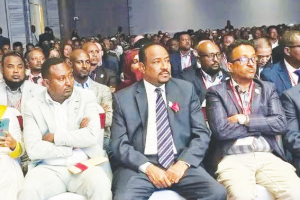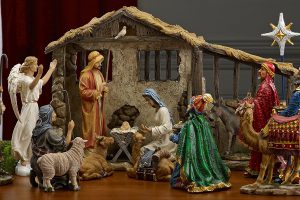
As home to 80 Nations, Nationalities and Peoples, Ethiopia is a museum of iconic and colorful tangible heritages like costumes, relics and stales as well as intangible traditions and festivals. Since every nation has its own way of life, food customs, clothing and hair dressing style, Ethiopia is rich in cultural products like souvenirs, cultural clothes, custom foods and beverages native to it.
In addition, it is home to many ethnic groups. Ethiopia is a large country with a wide-range of climatic zones and landscapes. This is also reason enough for the creation of different attires and dishes among the wide range ethnic groups of the country.
“Ethiopia showcases a diversity of languages, traditions, folklore, building styles, food customs, arts, beliefs and new cultural creations”, the Cultural Policy of the Federal Democratic Republic of Ethiopia, 2006, indicates.
Kidist Solomon is an Ethiopian cultural clothes seller in Shiromeda area .She has a small shop in the most famous market place for Ethiopian traditional clothes, found in the Northern part of Addis .It is there almost all Ethiopian cultural clothes exhibiting different styles are displayed for sale .
According to Kidist, her shop has cultural clothes from more than 50 ethnic groups. Buyers could choose costumes of different styles for both women and men of all ages. This indicates that the embroidery patterns vary on a massive scale from one ethnic group to another, from place to place. This is also a source of great interest for cultural tourists as well as for many Ethiopians of over 80 ethnic mix.
Although, it is a daunting task to classify Ethiopia’s national costumes into big and easily identifiable varieties, there are common features associated with Ethiopia’s national identity. In this regard, all white outfits, can be considered as the Ethiopian national costumes, due to their widespread use and general acceptance, even though there are a multitude of outstanding variations.
Although, every nation has its own dressing style, preference of color and types of clothes, Habesha kemis, Jano, Caba (Cloak), Gabi, Netela are few among the famous iconic cultural clothes of Ethiopia, Kidist said. In addition white linen cotton clothes are associated with Ethiopia’s national identity as mostly dressed in happiness, ceremony, holidays and other national events, she noted.
“Habesha Kemis” has the following to say concerning the national outfits of Ethiopian women. They are often a long snow-white dress decorated with embroidery.
The “netela” is a very thin and delicate scarf made from cotton and is rather large.
The embroidery done on the ends of the “netela” are usually decorated to match the dress it accompanies. The “netela” covers the back and shoulders, with the embroidered end folded over the right shoulder.
The “Gabi” is like a light blanket which is thicker and warmer than “netela” and usually worn by men.
As “Habesha Kemis” is for women, the most common costumeas of men are the white knee length shirts, white trousers and sweater with small “gabi”.
“Caba” (cloak) is a fashionable outfit worn over indoor clothing and serves the same purpose as an overcoat which protects the wearer from cold. It is also a bride and groom cloth during weddings. Kidist said that Ethiopians add green, yellow, red color of their flag and sometimes blue on their dressing, which accentuates the uniqueness Ethiopian tradition.
Kidist said that of Ethiopian traditional practices are intermingled. During holidays, weddings and ceremonies, Ethiopian traditional foods and beverages are provided with assortments of cultural materials. The waiters fully dress cultural clothes beautifying themselves with traditional hair styles.
According to her, by modernizing these colorful cultural clothes, it is possible to make them school uniforms, workers uniforms and day-to-day clothe, but still today “our cultural clothes are reserved for holidays and special events”.
For Kidist Ethiopian cultural clothes have strong relations with Ethiopian holidays and cultural foods.
As Ethiopian cultural clothes are colorful and iconic. They could be utilized to promote Ethiopia at international level. Government officials, Diasporas and other international travelers have to promote them. In addition, it is possible to make traditional clothes students’ uniforms preparing linking the task with micro and small enterprises that could the task to innovation or industrialization..
By capitalizing on cultural clothes, it is possible to promote Ethiopia to the world. It will become a source of income.
Tourism Sector Supervision Expert with Addis Ababa Culture and Tourism Bureau, Temesgen Mekonnen, told The Ethiopian Herald that Ethiopia has many native and unique delicious cultural foods and drinks. As every nation has its own colorful cultural clothes, traditions and practice, Ethiopia too has a wide-array of mouthwatering traditional dishes and beverages.
Currently, few among the nations’ customs foods have joined the hotel industry especially to the cultural restaurants, which prepare mostly Ethiopian cultural foods.
According to Temesgen Addis Ababa has around 13 modern standard cultural restaurants which are fully traditional from their chairs, tables, material they provided food with, architecture of the houses, ways they treat customers and styles the waiters put on the attires. Almost all foods and beverages are only Ethiopian. This tells on the originality of the tradition of the society.
In every nation, there are so many delicious cultural foods. To menu all the traditional cultural foods of all the Nations, Nationalities and Peoples, it needs to conduct thorough researches and studies by experts on the sector.
Yet , almost in all parts of the country ,there are common cultural foods and drinks . . Injera, Beyaynet, derowot, tibs, shiro, kitffo, doro wot (chiken stew), Injera fir-fir and Ambasha (Ethiopian cultural Bread) are among the commonest and widely known custom foods in the country.
Tej (an alcoholic honey beverage) named as honey wine and Coffee are also the most common and widely known cultural beverages in the country.
Both experts notes that Ethiopia has undiscovered capacity of several costumes and the country has never yet capitalized and benefited from its rich cultural traditions.
According to Bantihun Gessesse, Ethiopian Textile Industry Development Institute Communication Director, Ethiopia has started exporting cultural clothes specially ‘Yehabesha Kemis’. He said that during the first quarter of 2018/19 fiscal year, the country has earned 0.6 million USD from the export of different cultural clothes.
According to him, still today Ethiopian cultural products are not promoted and capitalized well and the country has not yet benefited from this sector.
Herald December 8/2018
BY DARGIE KAHSAY





